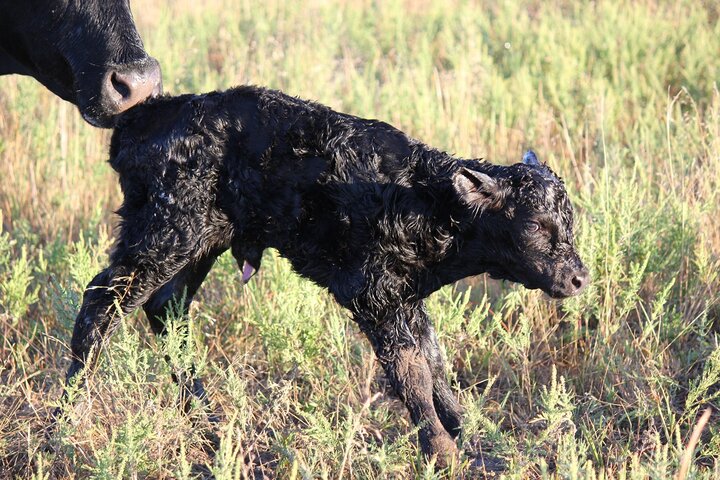A main economic driver of a cow-calf operation is the number of calves weaned per cow exposed. Two subsequent drivers are weight and phenotype. For these reasons, outstanding calf health is a directly correlated variable to calf growth and performance, and—ideally—profitability.
Prenatal Cow Care for Calf Success
Sound calf health management begins with the dam, prior to calving. A gestating cow should be fed to meet her requirements for her own maintenance plus the additional nutrients for fetal growth. If these requirements are not met, the fetus will still properly grow; however, the cow sacrifices her own reserves, lowering condition prior to lactation and re-breed. Cows in a body condition score of 5.5 – 6.0 (1-9 scale) have been shown to deliver calves with higher vigor, lowered incidences of dystocia, and have a quicker return to estrus. Research suggest underfeeding cows/heifers does not result in a smaller calf, but reduces cow performance post-calving.
Colostrum
A key component to getting a calf off to the right start is to ensure they receive colostrum within the first four hours post-calving. Colostrum is the primary source of nutrients and immunity for a newborn calf and is obtained only from the first milking after calving. After this initial milking, the cow begins to transition to lower quality and quantity of colostrum for the next 48-60 hours. Likewise, after the first hour, the calf’s ability to absorb immunoglobins across the gut wall begins to decrease. True colostrum contains two times as much dry matter and minerals, and five times more protein than whole milk, while also containing various hormones and growth factors required for growth and development.
Identifying health issues in calves
Detecting abnormal signs and behaviors that indicate a calf is sick is critical, especially in the first two months of a calf’s life. The main goal concerning calf health should be to detect abnormal signs and behavior between a healthy and sick calf. The quicker behavior signaling illness is detected, and treatment administered, the greater the chances of recovery are for the calf. In addition, this information can be used to develop calf management protocols and treatment strategies for current and future calf crops.
Scours
Calf scours is the most lethal ailment in the first 30 days of a calf’s life. While current practices have improved survival rate of calves, there is still an economic and time saving benefit to taking preventative measures rather than treating once the calf is sick. Scours are usually caused by two or more pathogens working together, or increased pathogen load in confined settings. Severity and duration of scours is dependent on the extent of intestinal destruction, stress level in the environment, and amount and quality of colostrum from the dam.
Three ways to help prevent a scours outbreak in your herd:
- Providing a clean environment for baby calves. Some practices that can help provide a clean environment include using the Sandhills calving method (cows that have not yet calved are rotated on pastures so newborn calves enter a clean environment), maintaining a clean calving environment, and sanitizing treatment equipment between calf uses.
- Ensuring the calf receives colostrum in a timely manner. Failure to do so increases risk of calf health problems.
- Vaccinating cows in the last trimester. Vaccinating for E. coli and rotavirus can potentially increase antibodies that the dam will pass on to her calf through colostrum.
Interviews with the authors of BeefWatch newsletter articles become available throughout the month of publication and are accessible at https://go.unl.edu/podcast.
Originally published March 1, 2022.

